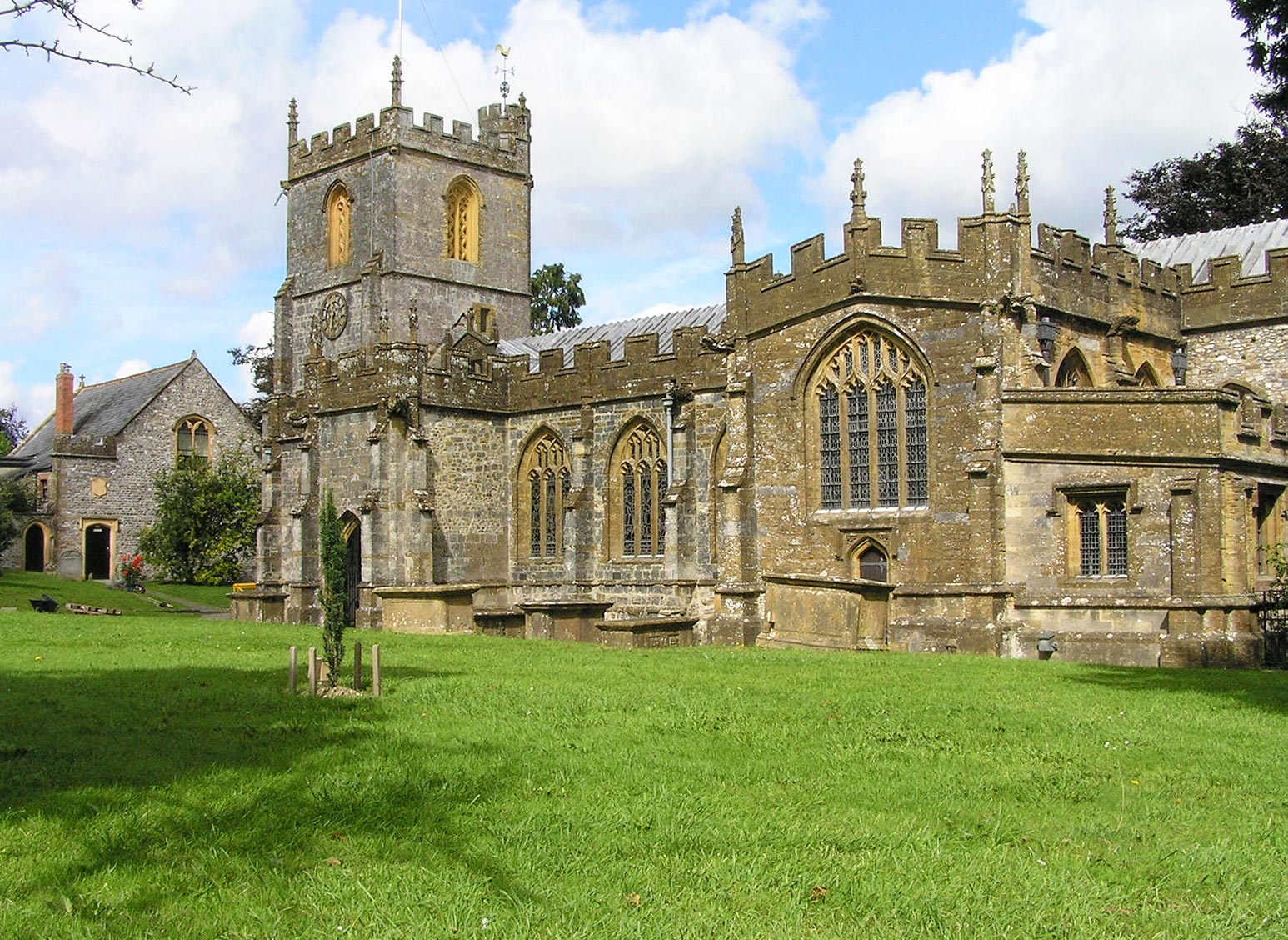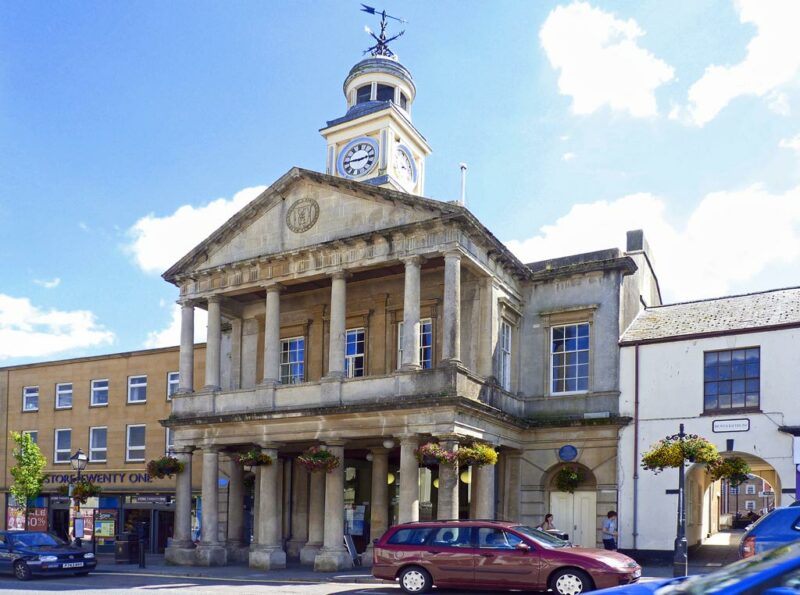Chard is the highest town in Somerset, at 500 feet above sea level, and the most southerly, lying very close to the Devon border. A hill fort exists on the ridge to the south-west. There is no evidence of prehistoric settlement at Chard itself but various prehistoric artefacts have been found in the Axe gravels to the south of the town. Roman artefacts and signs of occupation have been found on the fringes of the modern town which is within a few miles of the Fosse Way. Several Roman villas are known in the surrounding area.
By the Saxon period there was a small settlement probably clustered around the church. This area is now known as the Old Town, although its appearance has altered considerably since then, notably during the mediaeval period. At the time of the Norman Conquest, Chard belonged to the Bishop of Bath and Wells. In the Domesday Book, the settlement is described as “Cerdre”, which means the Royal House of Cerdic, a Celtic name. Apparently Cerdic founded the Kingdom of Wessex at the end of the 5th century and was believed by some to be the original King Arthur, making Chard the real Camelot.
There was certainly a borough charter in 1206, but the town was destroyed by fire and rebuilt at the end of the 16th century. Some of the buildings in Fore Street date from this time. The existing Monday market and fairs were confirmed by the King in 1285.

Chard, like many other towns in this area, was soon involved in the cloth industry. This was supported by sheep farming in the area from the mediaeval period or earlier. The town became a centre for local cottage industries, managing the trading and transport of their products, particularly to France in particular. The fire provided a temporary hitch to trade and industry but by the early 17th century trade was flourishing again.
Although Chard manor and Borough were seized and sold by the Commissioners of Parliament in 1646, these were returned following the Restoration. The English Civil War had little effect on chard otherwise, though both armies passed through the town and troops were billeted nearby. The town was later a scene of executions following Monmouth’s defeat in 1685 when Judge Jefferies hanged twelve men on the Hang-Cross Tree.
The setting up of turnpikes in the late 18th century improved the communications in the busy market town. Chard now lay on the main London to Exeter route and there were several coaching inns at this period. The cloth industry was still thriving at this time and continued to do so until it was priced out by competition from the northern textile mills in the late 18th and early 19th centuries. Lace making replaced some of the cloth trade in the first half of the 18th century and some of the mills were converted to this use.
Chard today has an excellent museum at Godworthy House. In addition to various exhibitions on local history there is an interesting display on John Stringfellow, who was the inventor of powered flight. Another strange display is the Gillingham collection of the world’s first artificial limbs.

One of the attractive town centre buildings is the Elizabethan Guildhall, home to the Tourist Information Centre. Nearby attractions are the Chard reservoir Nature Reserve and Hornsbury Mill, which has a working water wheel and a landscaped water garden.
The impressive former Cistercian monastery of Forde Abbey is located on the outskirts of Chard. Boasting over 900 years of history and some of the finest gardens in Somerset. The abbey was transformed into a grand country house after the dissolution of the monasteries by Henry VIII. Today, visitors can explore its elegant interiors, where carved ceilings, antique furniture, and a remarkable Mortlake tapestry collection tell the story of its past.

The grounds of the abbey are equally striking; beautifully landscaped they feature wildflower meadows, peaceful lakes, and one of the most powerful fountains in the country.
There is plenty of accommodation of all types available in this area. Chard also has a number of restaurants, cafés, galleries and some small interesting shops. the town makes a lively and interesting centre from which to explore Somerset and Devon.



